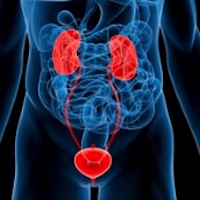Protective effect of cordycepin on experimental renal ischemia/reperfusion injury in rats

Accepted: October 27, 2020
All claims expressed in this article are solely those of the authors and do not necessarily represent those of their affiliated organizations, or those of the publisher, the editors and the reviewers. Any product that may be evaluated in this article or claim that may be made by its manufacturer is not guaranteed or endorsed by the publisher.
Authors
Aim: To date, various molecules have been investigated to reduce the effect of renal ischemia/reperfusion (I/R) injury. However, none have yet led to clinical use. The present study aimed to investigate the protective effect of cordycepin (C) on renal I/R injury in an experimental rat model. Materials and methods: Twenty-four mature Sprague Dawley female rat was randomly divided into three groups: Sham, I/R, I/R+C. All animals underwent abdominal exploration. To induce I/R injury, an atraumatic vascular bulldog clamp was applied to the right renal pedicle for 60 minutes (ischemia) and later clamp was removed to allow reperfusion in all rats, except for the sham group. In the I/R + C group, 10 mg/kg C was administered intraperitoneally, immediately after reperfusion. After 4 hours of reperfusion, the experiment was terminated with right nephrectomy. Histological studies and biochemical analyses were performed on the right nephrectomy specimens. EGTI (endothelial, glomerular, tubulointerstitial) histopathology scoring and semi-quantitative analysis of renal cortical necrosis were used for histological analyses and superoxide dismutase (SOD), catalase (CAT), malondialdehyde (MDA), total oxidant status (TOS) for biochemical analyses. Results: Histopathological examination of the tissue damage revealed that all kidneys in the sham group were normal. The I/R group had higher histopathological scores than the I/R + C group. In the biochemical analysis of the tissues, SOD, MDA, TOS values were found to be statistically different in the I/R group compared to the I/R + C group (p: 0.004, 0.004, 0.001 respectively). Conclusions: Intraperitoneal cordycepin injection following ischemia preserve renal tissue against oxidative stress in a rat model of renal I/R injury.
Supporting Agencies
University of Health Sciences, Turkey (BAP)How to Cite
PAGEPress has chosen to apply the Creative Commons Attribution NonCommercial 4.0 International License (CC BY-NC 4.0) to all manuscripts to be published.

 https://doi.org/10.4081/aiua.2020.4.340
https://doi.org/10.4081/aiua.2020.4.340



